Brushing off a ‘lack of sleep/alcohol’ headache I searched for our platform, it was 7am and I was trying to juggle Jack, a strong black coffee, orange juice and two bacon toasties. Being skilled in looking lost I was soon pointed in the right direction and before long we were headed west on the oldest train in the world, headed to the arguably the most horrific place in Europe, a place where it’s very name invokes sadness and disbelief. A place where I wondered if I should to be taking Jack, a place I where wondered if it would haunt him or bore him. But a place we were headed nonetheless.
Auschwitz, the most visited museum/memorial in Poland attracts some 1.5 million visitors annually. Which is about the number of innocent men, women and children murdered there. During the few years it was in action.
There are three camps, Auschwitz I which was base camp, Auschwitz II Berkenau was the extermination camp and Auschwitz III which was the labour camp. There was additionally 45 satellite camps. Entrance is free, but between certain months you must be accompanied by a guide. November is not one of those months and so we were free to simply roam.
Auschwitz I is like a set from a movie, with old brick accommodation blocks, all in line with each other and surrounded by a high barbed wire fences, many of the blocks have been converted into displays of what that particular building was for. For instance, Block 11 had in its basement prison cells, it was actually in these cells, perfectly preserved, that gas was first used to murder prisoners. Prisoners could range from anyone suspected of planning an escape, to looking at a guard the wrong way. The history behind it was that these tiny cells (1.5 metre squared) are built and would hold far more prisoners than they could accommodate. For the laugh the SS guards would watch the prisoners starve of oxygen and die. Bored of waiting as long as it would often take, they might light a candle to take more oxygen and thus speed up their entertainment. This took time, and so one day about 850 people were taken to the basement and Zyklon B gas was released, the result was death by much quicker means, this of course meant crematoriums had to be knocked up and a literal conveyer belt of the dead began. Realising the basement was ultimately not sufficient for mass killings gas chambers were erected in Auschwitz II Berkenau, a camp about 2 miles down the road.
The many buildings throughout Auschwitz I are fascinatingly interesting, Jack and I had a real freedom to explore, and whilst I read accounts and information he looked at maps and pictures of soldiers. The displays are harrowing to say the least and though some are subtle it’s difficult not to convey external emotion when you see 7 tonnes of women’s hair all piled about 8ft high and about 30ft long, shaved prior to their death. Bows still on pony tails, plaits still formed. Or the rooms filled with glasses, 40,000 pairs of shoes, tens of thousands of suit cases, fake limbs, cutlery and crockery, all belonging to murdered adults and children.
It was difficult with Jack, I had explained that it was where people were killed and he made like he understood, he would ask questions and seemed quite abstracted from it all in terms of an emotive connection. It was as though he knew what had happened, but couldn’t really comprehend it or connect with it. My major concern was that some of the things he might see would have some kind of lasting effect on him, but in truth the horrors of Auschwitz are not the pictures of hanged men or mass graves (though seeing a photograph of a parent hugging their child and facing away from the gun pointed at their head seconds before execution was difficult to see) but the horrors are realised through understanding, through the absolute empathy and helplessness and sorrow you feel, knowing this happened. And Jack is too young to comprehend such emotions and garner them from photographs of people he doesn’t know and hasn’t met.
After a couple of hours we took a taxi to Auschwitz II Berkenau, and at 15 zloty for the 2 mile journey it wasn’t that bad, I had considered walking but knew the vastness of where we were headed and so paid the couple of quid taxi fare since no one knew if there were any public buses since the free bus was not due for well over an hour.
Auschwitz II Berkenau is immediately recognisable, with the railway heading up to the entrance building it was the last glance of the outside over a million people would ever see.
Transit camps were dotted about Europe and many people would meet their fate at Auschwitz II Berkenau, the largest concentration camp under the nazi regime. Basically it was simple, Hitler decided that Jews needed getting rid of, and since Hitler had figured Poland should actually be a part of Germany the Poles had to go too so that room could be made for his new race. At first Jews around Europe were singled out and given a hard time, but as resentment grew it was decided that the world, or Europe, would be a better place if they were just wiped out. And so began the cleansing. Trains would arrive at Berkenau from all over Europe and would stop inside, people would get off the packed carriage and would be split. All those under 15 would be sent straight to die no questions asked. The elderly and infirm would follow. Recognising few people would readily walk to their death, particularly en masse, those singled out for extermination were told they would go and shower, and they were led into huge halls fitted with showers. Of course once they were filled the doors would be shut and gas released. They didn’t die quickly and those spared death would hear their loved ones, friends and fellow Jews scream as they died a slow, painful death, which could take anywhere up to 15 minutes.
The camp itself is huge, it really is. And a lot of it is just remnants of what once was. But there is more than enough to have seen more than enough. The Nazis, when they realised they had been rumbled, and the Russian army turned up to liberate the camp, bombed a lot of the buildings to try and mask the atrocities.
Images of naked women little other than bones are shown next to photographs of them before they entered the camp, complete shells of what they once were. Murder was carried out on a grand scale, and for those not murdered many more died of malnutrition, exhaustion and illness.
This was the camp that really captivated Jack, part due to its vastness, and part due to the railway which we walked along that took about an hour. And whereas at Auschwitz I Jack seemed to be disconnected from things, at Auschwitz II Berkenau its hard not to feel something. And as I watched him skip along singing his favourite song (call me maybe) the place felt bitterly cold, Jacks happiness seemed to be exaggerated in a place known for such misery. I wondered whether to make him exercise a little subtlety, but when I saw a group of around fifty or so elderly all looking and smiling at him I realised he is just a child and such happiness was welcome. Though as I watched him skip along headed to the gas chambers, I reflected on the horror kids his age must have gone through. As a parent I felt a true sadness and a bitter regret for all those who died, but particularly for those innocent little minds who’s only wrong in life was to be from a particular race/creed.
Auschwitz II is difficult to stomach, and is a sobering and sickening reminder of mans capabilities.
We walked back to the train station which was around 1.2 miles, or less if you suss out the shortcut we took, it involved crossing a railway line junction where Jack was convinced we narrowly escaped death since about 5 minutes after we had crossed a train trundled along at about 2mph.
Our visit to Auschwitz was sombre, yet positive, it brought us closer together and as parent made me realise just how fortunate I really am. I think sometimes you can lose direction, the saying is “always moving, never going anywhere”
For anyone stuck in that roundabout of life visit Auschwitz, feel history, learn your emotions, appreciate, understand, forgive but not forget, and learn.
The memorial at Auschwitz II Berkenau reads “Forever let this place be a cry of despair and a warning to humanity where the Nazis murdered one and a half million men, women and children, mainly Jews from various countries of Europe”
We have learned.

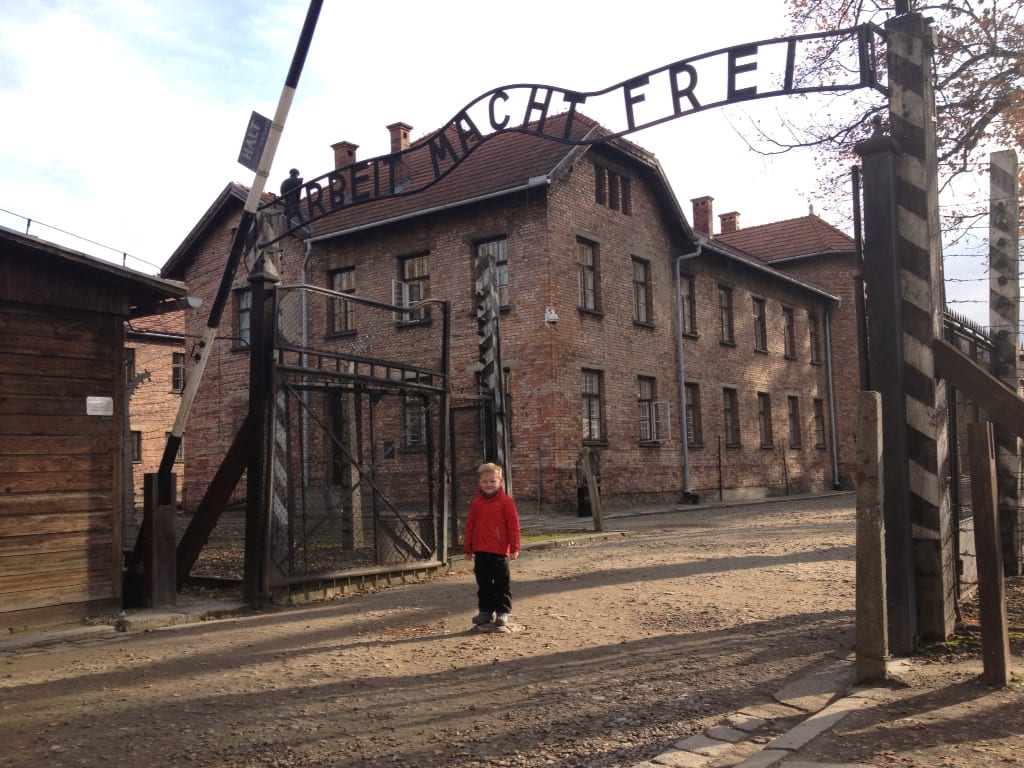
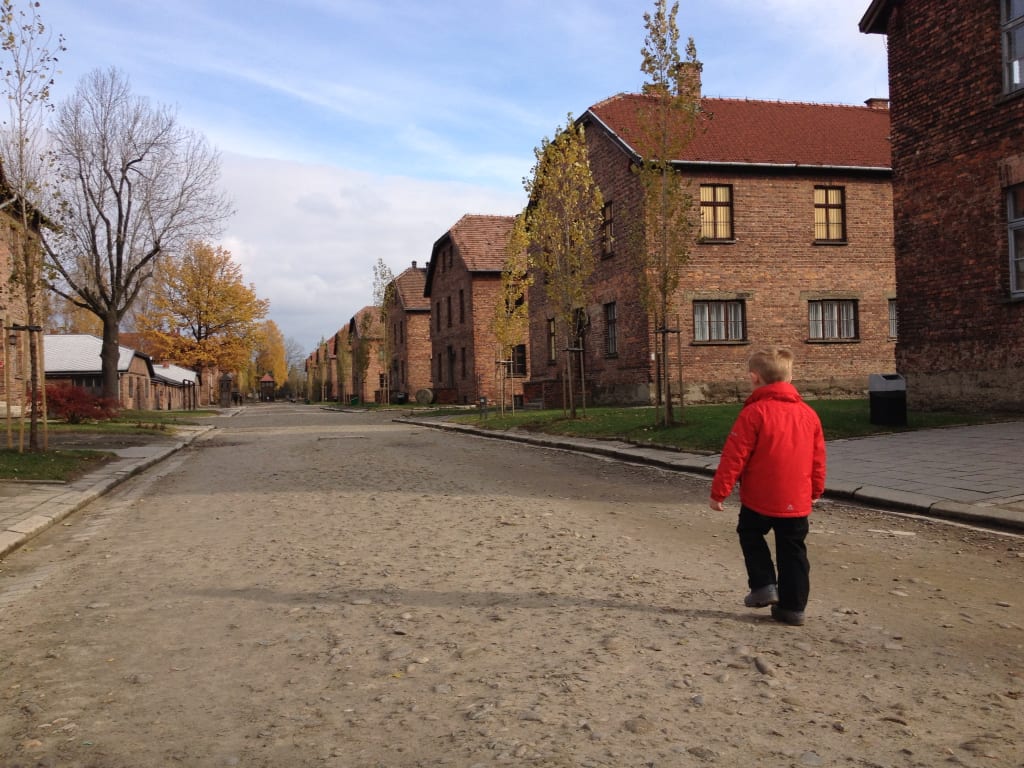
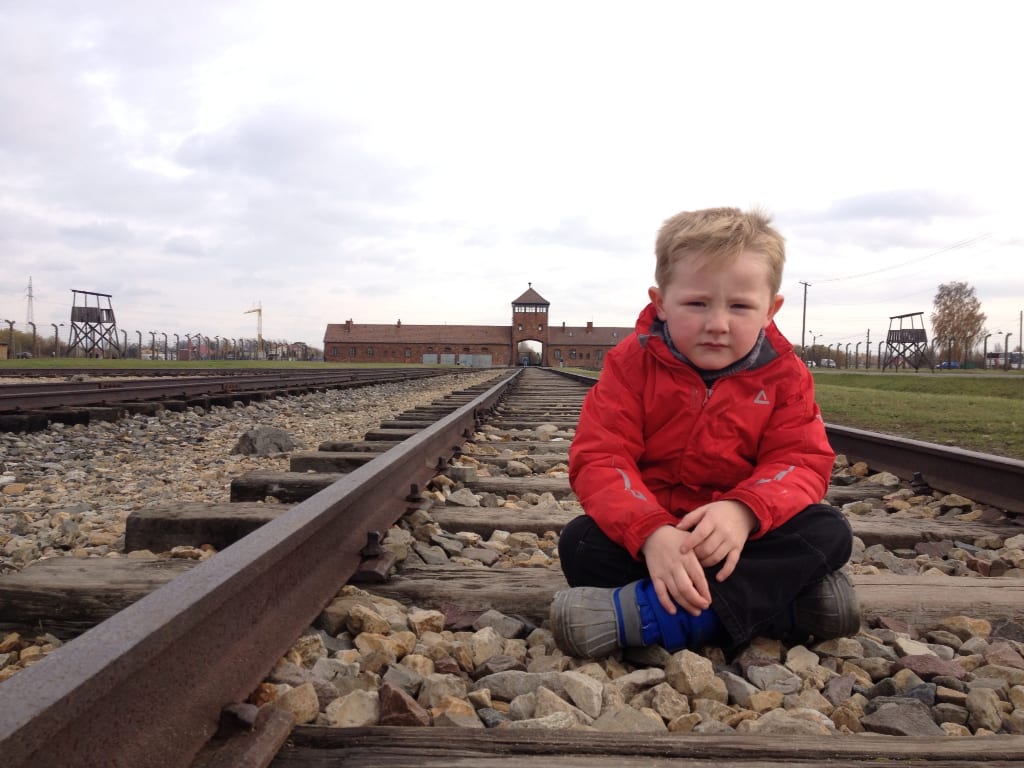
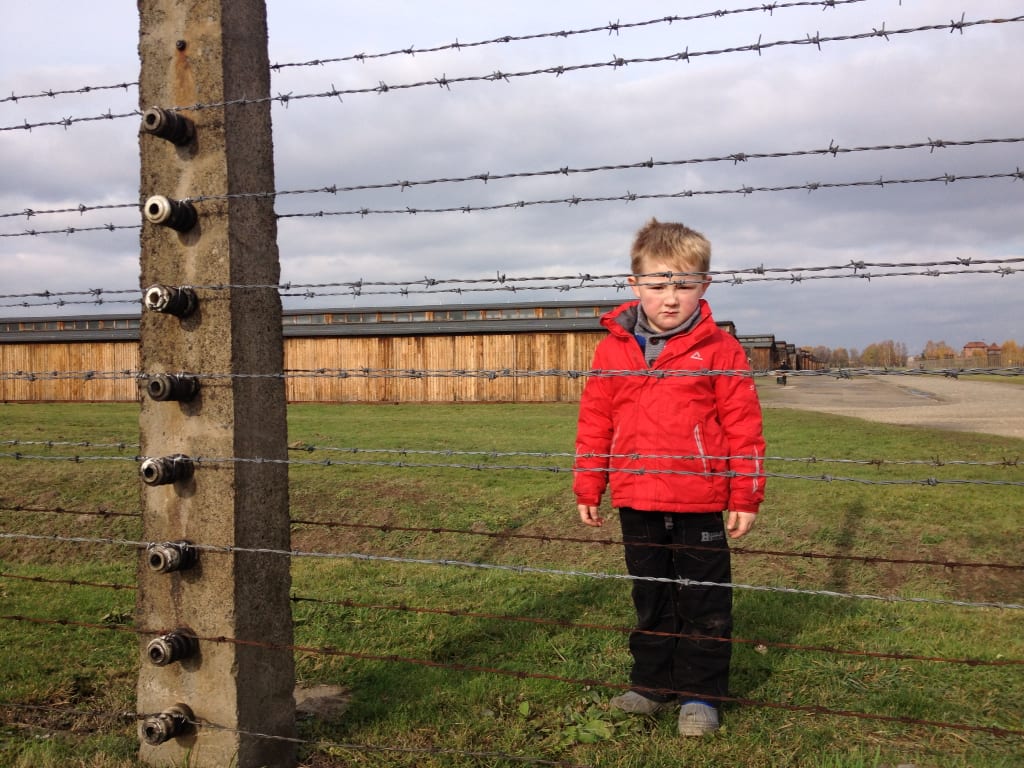
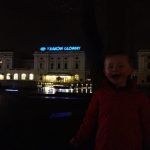
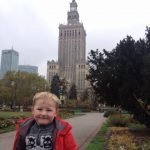
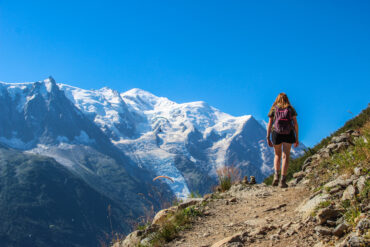
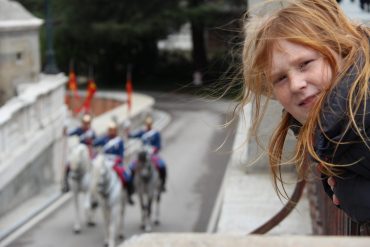
Comments are closed.